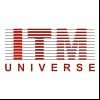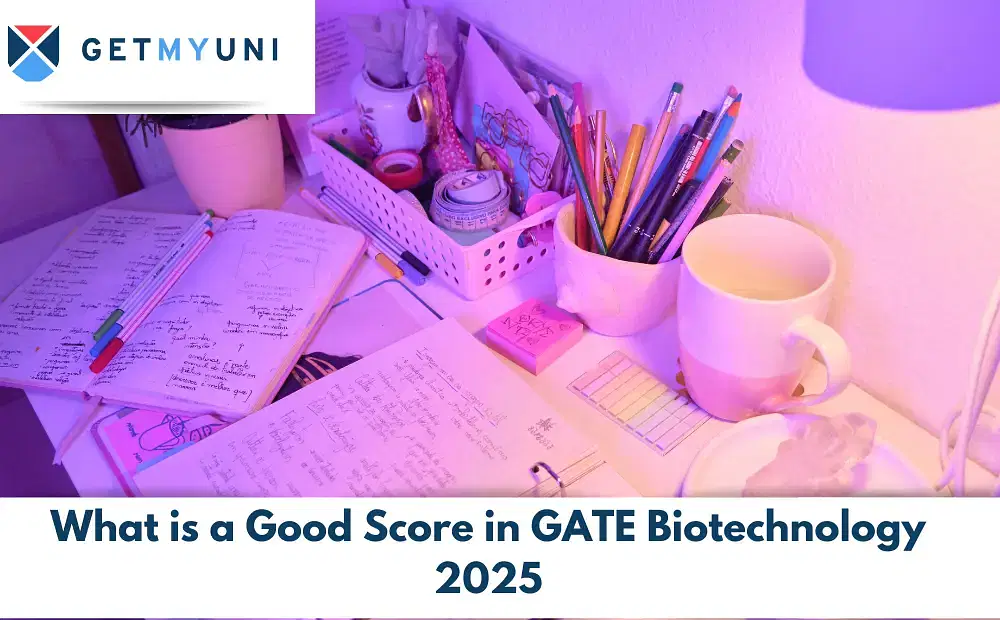GATE ECE Syllabus 2024 is divided into 8 sections, and the questions carry 1 and 2 marks each. Candidates may check out the chapter-wise weightage and download the ECE Syllabus for GATE 2024.
Table of Contents
GATE ECE Syllabus 2024: IISc Bangalore releases the GATE 2024 ECE syllabus; it includes topics for Engineering Mathematics, Networks, Signals and Systems, Communications, Electromagnetics and more.
Here we have provided the detailed ECE syllabus for GATE 2024 along with the downloadable PDF link for students' convenience.
GATE ECE Syllabus 2024
Candidates seeking admission to ECE (Electronics & Communication Engineering) through GATE must be aware of the syllabus, for it consists of section-wise topics. It is advisable to have a thorough knowledge of the subject before preparing for the exam.
Displayed below in a tabulated form is the GATE Syllabus 2024 for ECE:
Quick Downloads:
| GATE ECE Syllabus PDF | Download |
Engineering Mathematics
- Linear Algebra: Vector space, basis, linear dependence and independence, matrix algebra, eigenvalues and eigenvectors, rank, solution of linear equations- existence and uniqueness.
- Calculus: Mean value theorems, theorems of integral calculus, evaluation of definite and improper integrals, partial derivatives, maxima and minima, multiple integrals, line, surface and volume integrals, Taylor series.
- Differential Equations: First order equations (linear and nonlinear), higher order linear differential equations, Cauchy's and Euler's equations, methods of solution using variation of parameters, complementary function and particular integral, partial differential equations, variable separable method, initial and boundary value problems.
- Vector Analysis: Vectors in plane and space, vector operations, gradient, divergence and curl, Gauss's, Green's and Stokes’ theorems.
- Complex Analysis: Analytic functions, Cauchy’s integral theorem, Cauchy’s integral formula, sequences, series, convergence tests, Taylor and Laurent series, residue theorem.
- Probability and Statistics: Mean, median, mode, standard deviation, combinatorial probability, probability distributions, binomial distribution, Poisson distribution, exponential distribution, normal distribution, joint and conditional probability.
- Time and frequency domain analysis of linear circuits: RL, RC and RLC circuits, solution of network equations using Laplace transform. Linear 2-port network parameters, wye-delta transformation.
- Continuous-time signals: Fourier series and Fourier transform, sampling theorem and applications.
- Discrete-time signals: DTFT, DFT, z-transform, discrete-time processing of continuous-time signals.
- LTI systems: definition and properties, causality, stability, impulse response, convolution, poles and zeroes, frequency response, group delay, phase delay.
Also Check: GATE Mechanical Engineering Syllabus 2024
Electronic Devices
- Energy bands in intrinsic and extrinsic semiconductors, equilibrium carrier concentration, direct and indirect band-gap semiconductors.
- Carrier transport: diffusion current, drift current, mobility and resistivity, generation and recombination of carriers, Poisson and continuity equations.
- P-N junction, Zener diode, BJT, MOS capacitor, MOSFET, LED, photo diode and solar cell.
Networks, Signals and Systems
- Sinusoidal steady-state analysis: phasors, complex power, maximum power transfer.
- Time and frequency domain analysis of linear circuits: RL, RC and RLC circuits, solution of network equations using Laplace transform.
- Linear 2-port network parameters, wye-delta transformation.
-
Continuous-time signals: Fourier series and Fourier transform, sampling theorem and applications.
-
Discrete-time signals: DTFT, DFT, z-transform, discrete-time processing of continuous-time signals.
-
LTI systems: definition and properties, causality, stability, impulse response, convolution, poles and zeroes, frequency response, group delay, phase delay.
Analog Circuits
- Diode circuits: clipping, clamping and rectifiers.
BJT and MOSFET amplifiers: biasing, ac coupling, small signal analysis, frequency response. Current mirrors and differential amplifiers.
Digital Circuits
- Number representations: binary, integer and floating-point- numbers.
- Combinatorial circuits: Boolean algebra, minimisation of functions using Boolean identities and Karnaugh map, logic gates and their static CMOS implementations, arithmetic circuits, code converters, multiplexers, decoders.
- Sequential circuits: latches and flip-flops, counters, shift-registers, finite state machines, propagation delay, setup and hold time, critical path delay.
- Data converters: sample and hold circuits, ADCs and DACs.
- Semiconductor memories: ROM, SRAM, DRAM.
- Computer organisation: Machine instructions and addressing modes, ALU, data-path and control unit, instruction pipelining.
Also Check: GATE Geomatics Engineering Syllabus 2024
Control Systems
- Basic control system components; Feedback principle; Transfer function; Block diagram representation; Signal flow graph; Transient and steady-state analysis of LTI systems; Frequency response;
Routh-Hurwitz and Nyquist stability criteria; Bode and root-locus plots; Lag, lead and lag-lead compensation; State variable model and solution of state equation of LTI systems.
Communications
- Analog communications: amplitude modulation and demodulation, angle modulation and demodulation, spectra of AM and FM, superheterodyne receivers.
- Information theory: entropy, mutual information and channel capacity theorem.
- Digital communications: PCM, DPCM, digital modulation schemes (ASK, PSK, FSK, QAM), bandwidth, inter-symbol interference, MAP, ML detection, matched filter receiver, SNR and BER.
- Fundamentals of error correction, Hamming codes, CRC.
- Random processes: autocorrelation and power spectral density, properties of white noise, filtering of random signals through LTI systems.
Electromagnetics
- differential and integral forms and their interpretation, boundary conditions, wave equation, Poynting vector.
- Plane waves and properties: reflection and refraction, polarisation, phase and group velocity, propagation through various media, skin depth.
- Transmission lines: equations, characteristic impedance, impedance matching, impedance transformation, S parameters, Smith chart.
- Rectangular and circular waveguides, light propagation in optical fibers, dipole and monopole antennas, linear antenna arrays.
Also Check: GATE Engineering Sciences Syllabus 2024
GATE Exam Pattern 2024
All candidates need to know the GATE exam pattern for 2024. There will be questions involved from the GATE ECE Syllabus 2024. In case of an incorrect answer, there will be a deduction of marks.
Check out the detailed exam pattern of GATE 2024 below:
| Particulars | Details |
| Exam Mode | Online |
| Total Marks | 100 |
| Total Questions | 65 |
| Type of Questions | MCQs (Multiple Choice Questions) |
| Multiple Select Questions (MSQ) | |
| NAT (Numerical Answer Type) | |
| Answering Medium | English |
| Marking Scheme | Questions carry 1 mark and 2 marks |
| Negative Marking | For a wrong answer chosen in an MCQ, there will be a negative marking. |
| For 1 mark MCQ, 1/3 mark will be deducted for a wrong answer. | |
| For 2 mark MCQ, 2/3 mark will be deducted for a wrong answer. | |
| No negative marking for MSQ & NAT. |
Also Check: GATE Civil Engineering Syllabus 2024
GATE ECE Syllabus Section-Wise Weightage 2024
The question of marks distribution is always worrisome; therefore, here we have provided you with the previous years' GATE subject-wise weightage distribution for your reference.
This will further help you to acquire an awareness of the detailed GATE ECE Syllabus in each section.
| Section | The weightage (Marks) 2022 | The weightage (Marks) 2021 | The weightage (Marks) 2020 | The weightage (Marks) 2019 |
|---|---|---|---|---|
| Analog Circuits | 7 | 10 | 12 | 10 |
| Communications | 13 | 11 | 12 | 10 |
| Control Systems | 5 | 12 | 11 | 10 |
| Digital Circuits | 9 | 9 | 8 | 12 |
| Electromagnetic | 9 | 9 | 14 | 13 |
| Electronic Devices | 6 | 12 | 14 | 14 |
| Engineering Mathematics | 13 | 15 | 15 | 15 |
| Networks, Signals & Systems | 12+10 | 6+6 | 6+8 | 9+7 |
Also Check: GATE Biotechnology Syllabus 2024
GATE ECE Preparation Books 2024
There are several GATE 2024 Books in the market, and a candidate can't possibly read through all. To make the process simpler and easy, we have provided you with the list of books that covers the GATE Syllabus 2024 for ECE 2024, along with the author's name. These books can add value to your knowledge and help in enhancing the GATE preparation for ECE.
| Books | Authors |
| Higher Engineering Mathematics | Dr B.S. Grewal |
| Network Theory | Alexander Sadiku |
| Integrated Electronics | Jacob Millman & Christos C. Halkias |
| Signals & Systems | Alan V. Oppenheim |
| Automatic Control Systems | Benjamin C. Kuo |
| Analog and Digital Communication System | Simon Haykin |
| Elements of Electromagnetics | Matthew N.O. Sadiku |
| Semiconductor devices | David Neamen |
Also Check: GATE Exam Day Instructions 2024








![Indian Institute of Technology, [IIT] Bombay](https://media.getmyuni.com/azure/college-image/small/indian-institute-of-technology-iit-bombay.jpg)

![Indian Institute of Technology, [IIT] Kanpur](https://media.getmyuni.com/azure/college-image/small/indian-institute-of-technology-iit-kanpur.jpg)
![Indian Institute of Technology, [IIT] Kharagpur](https://media.getmyuni.com/azure/college-image/small/indian-institute-of-technology-iit-kharagpur.jpg)





























POST YOUR COMMENT